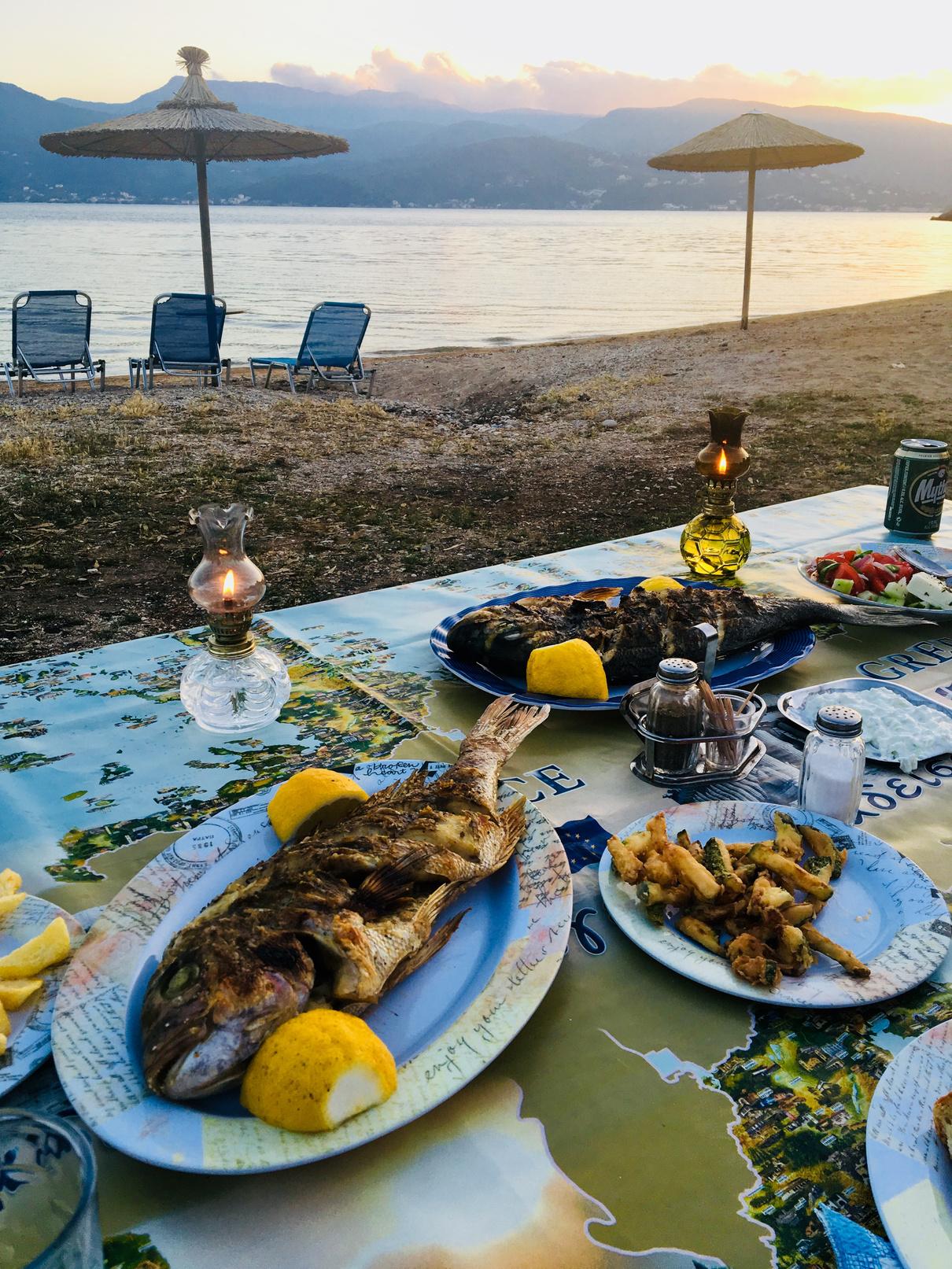



CSF I S S U E N O . 4 C h e f s s a n s F r o n t i e r e s TÜRKIYE "WOULDWEFACEONEMORETIME THESAMETRAGEDY" OPA! The finest salmon in the world We follow the fish from the water to the table international Greek inspired recipes Sustainability WHATISTHECHEF'S RESPONSIBILITY? 20 +



E-mail: info@royalspartanoliveoil.com Τel.: 0030 6975665555 – 0030 2731057005 Elaiolakoniki E E Address: Pellana, Sparti, Lakonia, Greece ZP 23100
6 TÜRKIYE

Life in the aftermath of the earthquake

1 2 THE FINEST SALMON

IN THE WORLD

We follow the fish from the water to the plate
1 8 SUSTAINABILITY
Chef Juliana delves into the responsibilities of the Chef
2 7 IS CLIMATE CHANGE RUINING OUR WINE?
Warming, wildfires and unsettled weather We look at the effects of climate change to with Australian wine industry
2 9 OPA! TASTE OF GREECE
Relish in the rich history, cuisine and products of Greece.


3 0 GODNESS
Olive oil the life blood of Greece has trickled through the country and its Islands for centuries One of the most prized ingredients that once used to anoint Pope ` s

4 1 MEZZE OR MEZZAH
Join us as we delight in the history of the small sharing plates & some delicious recipes
contents
Chef Alan Coxon President CSF Int

WELCOME

Καλώς ορίσατε!
Welcome to our “CSF int Spring edition” of which I hope you will not only find delightfully palatable thanks to our members wonderful spring recipe collection, our food stories will also whet the appetite.
“Sustainability” within our hospitality industry has become a vital part of our lives and practices, so we have invited CSF int Ambassador Chef Juliana Romero who has spent a great deal of time and research in this field to share the latest updates and news
I am also delighted to announce that our CSF int magazine as from this issue will be featuring and focusing on a different country around the world, so this spring where better to dive straight into than the Aegean with the gastronomic delights of Greece

A massive thank you to Chef Giannis Bratsolias ( exec chef of the Wyndham Poseidon resort ) for his efforts and hard work in bringing his culinary heritage and thousands of years of culture to all our tables.
Whilst it is a pleasure and privilege to communicate and share the wonderful features and recipes with you all in this magazine, the past unprecedented disasters of the earthquakes that took away thousands of lives and livelihoods in just a few hours during the night in Turkey and Syria really do bring home the exact reason why CSF int was created.
This magazine as beautiful and as pretty as it is ( a massive thank you once again to our media queen for the hard work that goes in to it) has a real mission, one that is to sell advertising and sponsorship opportunities to help raise funds for these very tragedies
The aim is to support small artisan food producers that lose livelihoods through natural disasters such as this, to retain cultural gastronomy, culinary heritage and traditional skills These in turn will have a knock on effect of safeguarding culinary tourism, allowing the beating heart of a community and a true identity of a country through its food to survive for the next generation to come
Thank you all for your valued contributions and continued support

 Alan Coxon President of CSF int
Alan Coxon President of CSF int
Announcement To All Chefs!

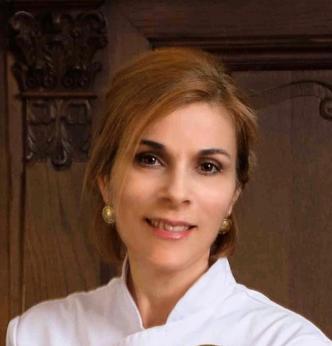



David hopes to include at least one CSF Junior Bakery Members, this will be a demonstration led with an element of hands on workshop
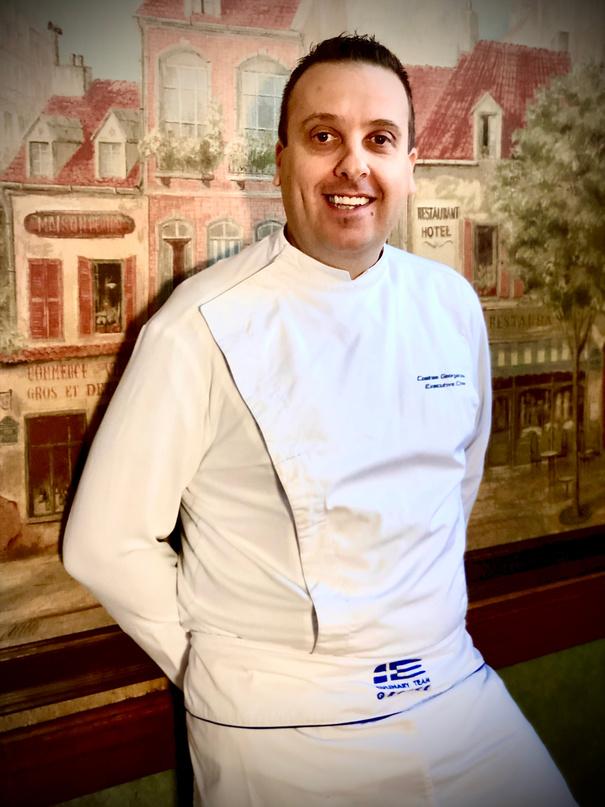
To help David understand the size of venue required, location with the right equipment, he would like to understand what dates would work for people later in the year



To register your interest please send an email with your preference of date of the event to:
davidmizon@yahoo co uk
JULIANA ROMERO KOSTAS GEORGANTAS MARIA BISTARAKI
JEAN NASSAR
GIANNIS BRATSOLIAS
SAKIS KOKINIDIS
APRIL CONTRIBUTORS
DR ANNITA ANTONIADOU
EVI CHIOTI DAVID MIZON
A CSF Charity 2 Day Bread Baking Course, sponsored by Foricher les Moulins and hosted by International Baker David Mizon. The course will unlock some of the skills and science behind making ha range of breads, burger buns, brioche, bagels etc
Türkiye
words by Riza Otelcioglu
Turkiye, used to be known commonly as Turkey until last year when it reverted back to its original name Türkiye used by the Turks since 1923, when Türkiye became the successor state to the Ottoman Empire
Turkiye is a country which is worldwide famous for its history, culture, tourism and hospitality and is a country where the people share their own food on their table even with foreigners to show their hospitality.
Turkiye is a country where almost everyone tries to help visitors in their capacities and capabilities even though there might be a language barrier for some
The country is a genuine melting pot of cultures with each region highlighting its different civilizations, culture and traditions
It is a dynamic nation with the greater population and more

E X C L U S I V E
modernised locations found on the Western and Southern side, whilst the more traditional cities can be found within the Central, Eastern and North parts, a country that has its feet planted firmly in two continents, Europe and Asia… On 6th of February 2023, this beautiful and welcoming country woke up to shock of a devastating earthquake which struck the Central Eastern part of the country
All the newspapers and social media were announcing that an earthquake with 7 8 magnitude had been recorded at Kahramanmaras during the very early hours whilst people slept peacefully in their beds The shock of the quake devastated buildings killing thousands as it shook buildings to the ground An earthquake that took little mercy boasting one of the most powerful quakes in the country since 1939 The news immediately flashed back in our deep memories of two other serious earthquakes that we had experienced in 1999 and reminded everyone of the devastating results it left behind. Close to twenty thousand people had lost their lives, fifty thousand people were wounded, and roughly one hundred thousand buildings had been destroyed by those earthquakes
Worldfamousforits history,culture, tourism&hospitality
the biggest city and main business hub located at North west of Turkiye, the sadness of the people was obvious from their face and anyone could easily sense the pain and the inquietude respectively in their hearts and minds. The workplaces were silent as employees desperately tried to learn more about the devastating event. As the time passed, more information emerged from the region whilst pictures circulated on the media showing the devastation and disaster that had occurred

The question however still being raised “ was it all over?” Unfortunately, not at all… At noon, we would be shocked one more time with the news of a second strong earthquake with 7.5 magnitude in the same region… Two strong and serious earthquakes in a row in the same region was something new even for us as the citizens of a country with
So many people had buried at least one of their immediate family members, some even had lost their entire family, and so many children were left behind without parents… The first and immediate question which came to mind was simple “Would we face one more time the same tragedy?” With this fear in the hearts, friends and families who had relatives living in the affected region were trying desperately to reach them in the hope that a familiar voice would pick up the phone and declare that everyone was safe and sound. Even when walking on the streets of Istanbul, page 7
notorious earthquake history The reporters, who were broadcasting the news live from the earthquake area, were suddenly amidst the sudden shock of the second earthquake and the buildings behind them were collapsing in the blink of an eye Within seconds their surroundings were being covered with a dust cloud rising up into the air from the collapsed buildings The people were just unconsciously running around either to escape or to get help to rescue someone who had been trapped under the buildings
Teams from the “Disaster and Emergency Management Agency” were drafted in from across the entire country, however despite this, there were still insufficient numbers to cope with the unprecedented scale of damage The weather conditions were also not in favour of the people in the region either, it was already winter and the temperature was 3 Celsius during the day and close to -1 during the night Thousands of poor souls still alive were in effect buried under the cold concrete rubble of the collapsed buildings, many would pass away from hypothermia if not directly from their injuries Timing to get to those still alive was of paramount importance for their survival whilst the rescue teams worked around the clock to reach people who were trapped beneath. The time was passing quickly and the night would be soon falling over cities. The people who had luckily survived from the two earthquakes now faced hunger and cold. But for some, that was the least of their concerns as they were more concentrated on trying to save their beloved ones from the debris of their damaged homes.
Every second, the numbers of death and wounded people were increasing whereas the hopes were being replaced by deep concerns for those who had been desperately trying to reach out their friends or family members. As the days passed we were rejoicing with the news of people who were being rescued like the 13 year old boy who was pulled to safety after a staggering 55 hours buried alive. Followed by people being saved even after 220 hours.However, the record would be in Antakya after the rescue of 3 people from the debris following 296 hours beneath their collapsed home… As I try to compose this article, the calendar shows the date as 20th of February 2023, 14 days after the earthquakes… Not much rescue searches are being carried out any further in the region considering that there won’t be any more possibility for anyone to still remain alive. During these two weeks, all the international organisations showed tremendous efforts to help the people in the

region by providing food, clothes, tents and so many other things, which might be handy in these types of disasters We can never thank them enough for their efforts, nor to all rescue teams who came from around the World to help us However, as of today, the death toll is close to 41 000, with more than 100 000 wounded and more than 100 000 buildings were destroyed Some people not only lost their homes, but lost their families and friends Many of those are left with neither a place to shelter nor with a place to work.
For sure, it will not be so easy for the affected people either to cope up with this catastrophic trauma nor to deal with the economic side effects. It will take years for these wounds to heal. Therefore, the people of Turkiye would appreciate your donations that you might want to channel through CSFint to help local artisanal food producers and farmers to put their business back to normal and to continue to support their families
On behalf of Turkish people, by taking this opportunity, I would like to express in advance my deepest and sincere gratitude for any possible assistance that you will be able to extend in these difficult days that we are going through. The blessings of the affected people shall be always with you.

page 9
A massive congratulations goes out to Brad Bennett ( our CSF int Ambassador to Australia ) and his students for their brilliant work and efforts in raising 1000 EU for CSF INT
The funds will go towards supporting the artisan food producers that lost their livelihoods in the tragic earthquake disaster in Turkey

It is most humbling to see our next generation of chefs supporting foods, ingredients and cultural culinary heritage from the other side of the world and ensuring the vital aspects of what small producers offer in terms of not only product diversity, but also the retention of a countries true identity and the extremely valuable culinary tourism for many other sectors within the community. Thank you all.

A big thanks to everyone that have supported with various donations since December as I appreciate that we live in challenging times and finances are not easily gained
All funds received will go to a very worthy cause of which I hope to be featuring a little insight about the recipients supported by you in our CSF int summer magazine
SUPPORT FOR TURKEY COMES IN FROM AUSTRALIA
THANK YOU TO BRAD BENNETT AND HIS STUDENTS
CSF ShopOnline





Enjoy

our ever growing online store with premium products direct from suppliers. To add your products to the store please email: info@csfintcom
CSF-int Registered association number W241006753
www.csfint.com/shop
THE FINEST SALMON IN THE WORLD

FOLLOW THE FISH FROM THE WATER TO THE TABLE
From East London E1 to world no.1 cold salmon smoker Now let’s get one thing clear, I have never wanted to be no 1 at anything (well apart from Connect 4 and the Rubik’s cube). I have always cooked with luv, honour passion & integrity

So how does a cockney street kid find his calling in the cold smoke salmon world?
I started to smoke salmon after an itch that I got, so naturally I scratched it and after trying to make my own smoker I set off to England and the wonderfully talented Smoking Brothers (thanks bruvas) @ Daylesford organic farm in the Cotswolds to pick their collective brains on the smoking process
When I came back home to Denmark (9 years now), I knew this was something that I wanted to pursue and after much trawling (no pun intended) I found the Danish salmon (https://danishsalmon.dk). This was a major part of my light bulb moment, land based salmon farms that were a sustainable solution to the problem of open sea farms
Land based salmon is drug free, chemical free, hormone free and contains no sea lice or worms. The farm uses a recirculating aquaculture system (RAS) who recycle 99% of the water, has a mortality rate less than 1% and the fish are fed on GM free food. The way the salmon are bred means that have 10% less fat,
I realise now that I am born to serve and now armed with such a product that will now facilitate this to meet and serve hopefully some of you that are reading this even (maybe)
I now have a laser focus to make and serve the most sustainable dry cold smoked salmon that I am capable of doing, I have found my why and this is it.
My dry aged cold smoked salmon can’t be too shabby my first customer was Paul Cunnigham at 2 star Michelin star restaurant
https://www hennekirkebykro dk
As with life I continue to learn adapt and improve. I suspect there will be lots more hurdles, obstacles and dead ends to navigate round and through but when you get to play at doing what is your calling then it really does become child’s play
WE DO IT DIFFERENT THAN THE OTHERS
which means the salmon are from a cleaner source and offer a demonstrably healthier product. As the farms are land based, they are regulated by the government veterinary laws that are food industry standard here in Denmark.


As with all the best ideas it was through trial and error and sheer determination that I discovered the dry ageing process which is now an integral part of my unique process, but that’s another article in itself
Once I finally joined the dots the eureka moment came and the lightbulb was firmly pressed on and was burning so bright that I could feel it in my very core and then came the immortal words “I have got something here”
I was then on a mission to bring my product to the masses and to do that I had to beg, borrow and steal (metaphorically speaking) what I could get my hands on, and so the Royal Nyborg Smokehouse was born
I have what in my 25+ years cooking experience knows is a world class product. I have developed my process to what it is now, and will continue to tweak, adapt and improve the whole process
Should you or a colleague want or need to try my product then please pop into the smokehouse for a chat, tour & taste I can also send you a taster anywhere on mainland Denmark My next hurdle being worldwide domination and if you know anyone that can help with this step do please give me a shout
Chef luv & good vibes to the best industry in the world
John (best dry aged cold smoked salmon)
Read more on the Royal Nyborg Smokehouse
Beluga CaviarTarte A La Royale
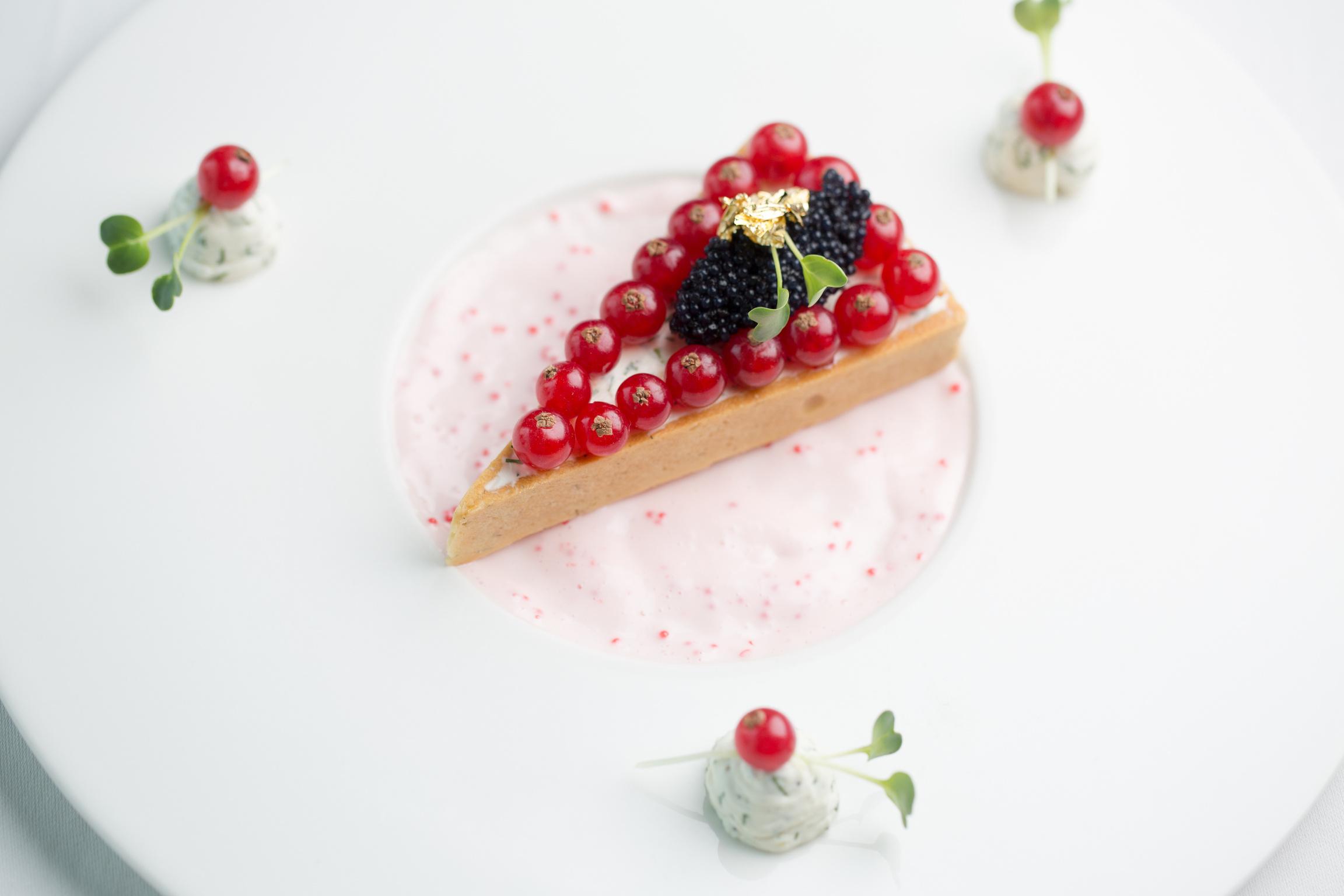 by Chef Jean Nassar
by Chef Jean Nassar
Beluga Caviar “Tarte A La Royale”
Savory Italian Fennel Pollen & Olive
Oil Infused Tart Shell
125g Light Whole Wheat Flour (T80)
125g All Purpose Flour
6g Fine Sea Salt
4g Italian Fennel Pollen
60ml Extra Virgin Olive Oil
120ml Cold Water
Duo Of Alaskan Wild Salmon Tartare
300g Fresh Alaskan Wild salmon, finely chopped
100g Smoked Alaska Wild Salmon, finely chopped
20g Shallot, thinly sliced
2 5g Grain mustard a l’ancienne
2 5g Wasabi paste
20ml Lime juice
15ml Lemon juice
5g Lime zest
15g Plain Greek yogurt
30g Mayonnaise
15g Capers, chopped
15g Cornichons pickles, chopped
5g Fresh chives, chopped
Fresh Dill Infused Whipped Cream Cheese
150g Cream cheese, whipped
10g Fresh dill, chopped
5g Lime zest
2g Fine sea salt
1g Ground white pepper
Tobiko Caviar and Smetana Cream
150 g Smetana cream or sour cream
50g Tobiko caviar
Method
Savoury Italian Fennel Pollen & Olive Oil Infused Tart Shell
Grease the tart triangle moulds lightly.
Combine the flour, salt, and herbs In a medium mixing bowl, and Add The Oil And Water.
Mix with a fork until just combined
Transfer to a work surface and knead lightly until the dough comes together into a ball
Sprinkle a little flour on the ball of dough and on the rolling pin, and roll the dough out into a circle large enough to cut the shapes to fit the tart triangle moulds
Turn the dough by 45 degrees (A quarter of a circle) Every time you roll the pin and back, adding a little more flour underneath and on the dough when it seems on the verge of becoming sticky
The trick is to do this in quick, assertive gestures to avoid overworking the dough
Cut the dough into the desired shape and transfer it carefully into the prepared triangle moulds and line it neatly
Trim the excess dough with a knife, and place the moulds in the fridge for 30 minutes to rest
To blind-bake, prick all over with a fork
Preheat the oven to 175℃, Insert the moulds on a pan and bake for 20 minutes, until lightly golden
Cool down the tart shell to be used later on
Composition
Savoury Italian fennel pollen & olive oil infused tart shell
Duo of Alaskan Wild Salmon tartare (Filling Bottom Layer)
Fresh dill infused whipped cream cheese (Filling Top Layer)
Fresh red currants
Almas Iranian Beluga caviar
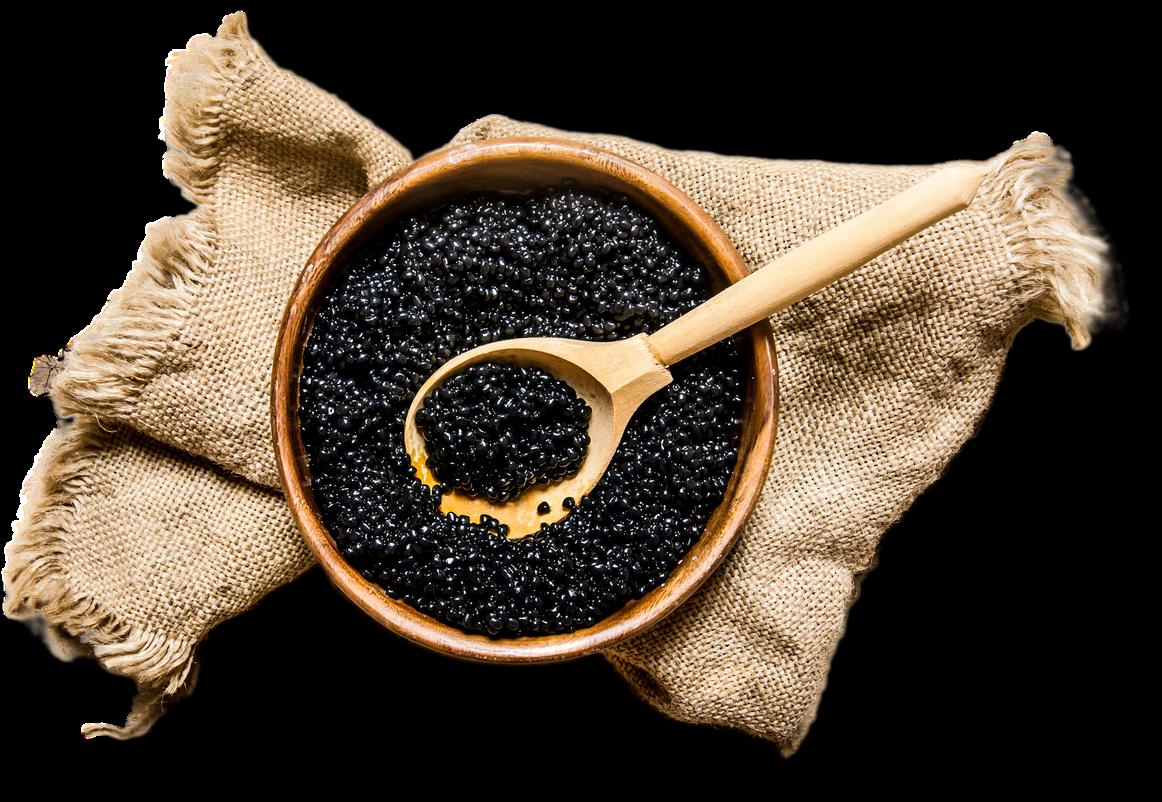
Tobiko Caviar and smetana cream
Rocket micro herbs
24 Karat edible gold leaf
Method
Duo of Alaskan Wild Salmon Tartare
In a bowl, combine all the tartare ingredients
Store in the fridge until ready to fill in the tart shell
Fresh Dill Infused Whipped Cream Cheese
Bring the cream cheese out of the fridge to come up to room temperature and soften for 10 minutes
Add the fresh dill, lime zest and seasoning to a mixing bowl with the cream cheese and whisk until well whipped and combined
Store in the fridge until ready to fill in the tart shell
Tobiko Caviar and Smetana Cream
In a bowl, combine all the tartare ingredients. store in the fridge until ready to use.
Assembly
Dress the Tobiko caviar & smetana cream in the middle of the cold plate.
Place on the cream the triangle savoury Italian fennel pollen & olive oil infused tart shell
Fill the bottom of the tart with the salmon tartare
Fill the top of the tart with the dill infused whipped cream
Place on the borders of the tart the fresh red currants
form a quenelle of Almas Iranian Beluga caviar by using two silver quenelle spoons and place on top of the tart
Place the rocket micro herbs and the 24 karat edible gold leaf on top of the Beluga caviar quenelle
Pipe dill infused whipped cream drops by using a piping bag and topped with red currants and micro herbs on the plate’s borders surrounding the tart
 Words by CHEF JULIANA ROMERO
Words by CHEF JULIANA ROMERO
WHAT IS THE CHEF'S RESPONSIBILITY?
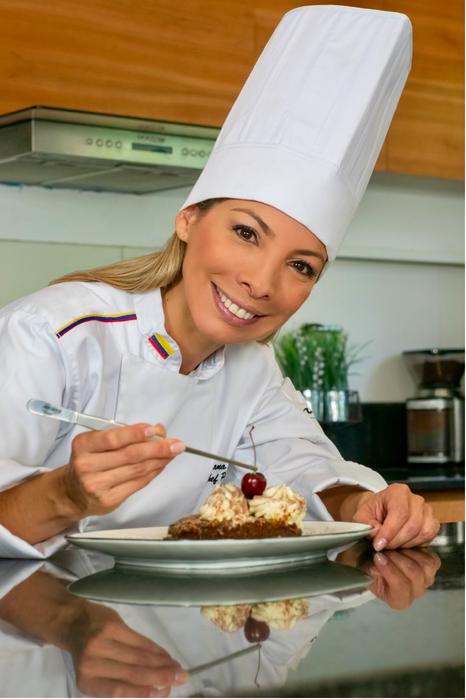
Sustainability
When talking about sustainability in gastronomy, it is common to hear the term sustainable development as well. We do not know or realise that these are two different but related concepts It is necessary to establish the differences between the concepts to understand that they do not mean the same thing, though they are closely =ed to gastronomy. To understand these concepts, let’s check the definition of each per the United Nations (UN): According to the UN, sustainability: "takes full account of the environmental consequences of economic activity and is based on the use of resources that can be replaced or renewed and therefore are not depleted." I always suggest identifying official definitions and then
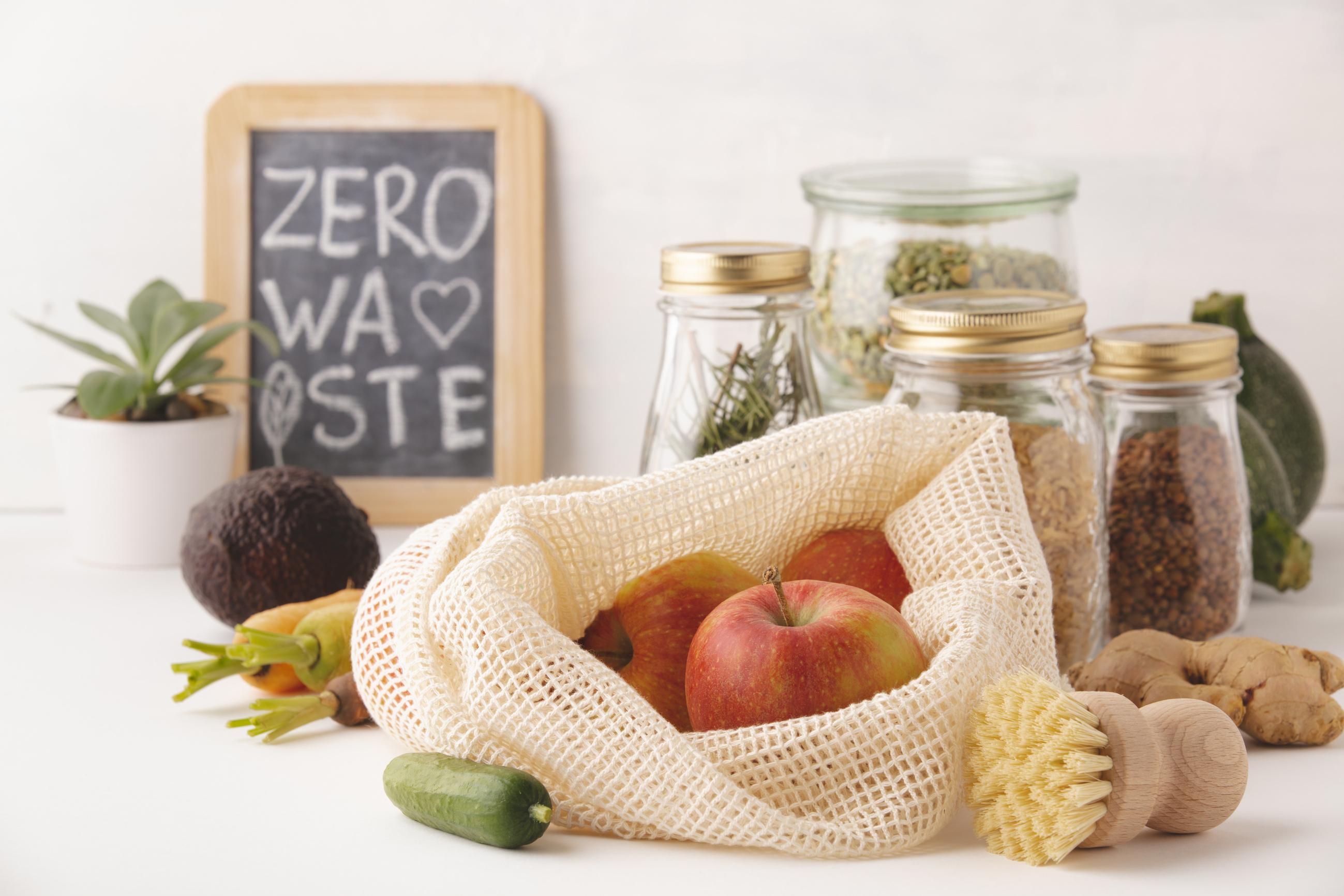
interpreting them according to the specific context In the kitchen, it is possible to say that sustainability "is the correct use of our resources today in order to have resources tomorrow." What would be of our preparations if we ran out of fruits to do gelée? Or if we are left without water needed for cooking? Are we prepared to go back to cooking without basic supplies? Without energy? Are we ready to understand that soon there will come a time in which world growth will come to a standstill due to a lack of resources? Now it is =me to review what is SUSTAINABLE DEVELOPMENT.
According to the UN, sustainable development is "maintaining the balance in the use of current resources so that they can last longer without running out or causing damage to the environment." It is not necessary to stop consuming, nor stop purchasing, nor to stop producing It is more important to be conscious of the balance between our consumption and our production to ensure a healthy life and productive today and tomorrow
Throughout my gastronomical experience, I have realised that the influence we have on others is much more that to simply cook or bake We are in the 21st century and of the many things that are popular now; being an “influencer” is one of them. A term that has just come to light but has always existed Do chefs fully understand that we are "influencers"? That this profession causes emotional states and physical reactions that are essential for social development? Let's dive into this topic a li le more and understand the reason why sustainability and gastronomy are so closely linked to each other Because when everyone works together, it causes an unprecedented social, environmental and economic response.
As a starting point, it is of paramount importance to know the origin of the ingredients and the right season of each one of them. To achieve this, it is a must to understand about “Supply Chain”: the impact of the logistics, the caring of the merchandise during transit, the fact of having food stocking in the market, the packing of each one and finally the process and transportation un=l it gets to the kitchen.
This leads us to a new concept of supply chain Circular economy "The circular economy is a model of producton and consumpton, which involves sharing, leasing, reusing, repairing, refurbishing and recycling existng materials and products as long as possible In this way, the life cycle of
products is extended In practice, it implies reducing waste to a minimum When a product reaches the end of its life, its materials are kept within the economy wherever possible. These can be productively used again and again, thereby creating further value This is a departure from the traditional, linear economic model, which is based on a take-make-consume-throw away pattern. This model relies on large quantities of cheap, easily accessible materials and energy.” (Source: European Parliament) This new approach in the supply chain that would finally guide us to use materials and resources properly and efficiently in sustainable gastronomy.
 Left Graph: A new concept of supply chain. Circular economy
Left Graph: A new concept of supply chain. Circular economy
ARE WE PREPARED TO GO BACK TO COOKING WITHOUT BASIC SUPPLIES?
If we understand the origin of the ingredients, and the supply chain of the products, we will be able to understand the social, environmental (climate change) and economic impact of the food we cook. By doing so, we avoid generating waste and will appreciate our food Also, we will learn to expand our repertoire of dishes and create magic culinary dishes Evolution in the kitchen means to move forward and thrive, so we should demonstrate it even more in our gastronomical practice Generally, chefs look for a perfect, minimalist presentation with a flawless decoration. Frequently (not to say most =mes) by doing so, it makes us create waste from certain por=ons or from our creations.
This is the part where we should value our ingredients, expand our knowledge, and learn to use remaining food, those ones we thought did not look good. In other words, innovate in our presentations to take them to the next level where waste does not exist. In this way, we created a “ zero waste” conscience, therefore our socioeconomic impact will be positive. We will then be ambassadors of a conscious consumption and above all sustainable.

page 20
What is food waste? According to FAO (Food and Agriculture Organization of the United Na=ons), it describes to the lost food waste like “Food waste refers to the discard of edible foods at the retail and consumer levels, mostly in developed countries " One of the main aspects to consider for a sustainable gastronomic business is to use whole ingredients, avoiding waste and giving them a real value to be able to integrate them in dishes and transform them so the look breathtaking
Food waste has a negative impact on the climate (gas emissions and odours), the water, the soil and the biodiversity: these are the reason why it is important to carry out certain ac=ons to ensure natural resource This guides us towards a sustainable gastronomy that helps diminish the negative effect in our environment

We, chefs, should spread this knowledge to create sustainable consciousness. We should teach how to use each ingredient, the way to make a good use of it, and understand its supply chain. We are responsible for considering agriculture producers, food season We also need to consider going back to some past culinary practices that have been left out for years; revive certain tendencies of utilising nature, for instance, like the consumption of some plants, seeds and Insects, which have great nutritional contribution and a positive environmental impact and cut down on consuming certain meats Not only do we need to teach the kitchen staff, but also teach dinner guests, who will have in their hands a menu based on seasonal vegetables, so that they have a more dynamic and renewed menu.
WHAT IS FOOD WASTE
The chef’s sustainable gastronomical management creates an impact on the dinner guests, which has an unstoppable and positive social outcome These actions taken by chefs in restaurants promotes individual awareness. In other words, dinner guests will not doubt in following the steps for positive a social effect They will arrive to their house thinking on creating better results, ways to reduce wastes, making well-meant choices of products in the market, supporting the local consumption, and thinking twice when it comes to packaging
This is just the beginning of the first part of what we, cooks, can make to build a sustainable awareness. In my opinion, this is where we shall start by creating conscience, assimilating concepts, understanding the impact and the influence we can exert on the others. All this is to be able to con=nue with the following steps and finally manage altogether to promote sustainable gastronomy, which helps diminish ecological footprint and environmental consequences. Sustainability is a reality, and it is up to us to achieve a universal impact today, tomorrow and always

of the earth
words:JacquiBrown
Salt is one of the most ubiquitous ingredients in the world, and it has been used for centuries for its ability to enhance the flavour of food However, not all salts are created equal, and one of the most unique and fascinating types of salt is found in the salt plains.
Located in various parts of the world, salt plains are vast, flat expanses of land that are covered in a layer of salt These salt plains can be found in countries such as Bolivia, Chile, and Iran, and they are the result of a combination of geological and environmental factors
One of the most famous salt plains in the world is the Salar de Uyuni in Bolivia It is the largest salt plain on earth, covering an area of more than 10,000 square

The six leading salt producers in the world, Australia, Canada, China, Germany, India, and the United States, account for more than half of the worldwide production.
kilometres. The salt flat is the result of millions of years of geological activity, including volcanic eruptions, tectonic shifts, and the drying up of ancient lakes.
The salt extracted from salt plains is not like the table salt that most people are used to Table salt is typically refined, processed, and stripped of many of its natural minerals and elements. The salt found in salt plains, on the other hand, is often considered to be more pure and natural, and it contains a variety of minerals
didyouknow?
Above: Salar de Uyuni - Bolivia
and trace elements that can add complexity and depth to dishes
There are several different types of salt that can be extracted from salt plains, each with its own unique flavour profile and culinary uses.

Himalayan Salt
One of the most well-known types of salt that is extracted from salt plains is Himalayan salt This salt is harvested from the Khewra Salt Mine in Pakistan, and it is known for its distinctive pink hue. Himalayan salt is said to be one of the purest forms of salt available, and it contains over 80 trace minerals, including magnesium, calcium, and potassium This salt is often used as a finishing salt, and it can add a subtle sweetness and complexity to dishes
Fleur de Sel
Fleur de sel is a type of salt that is harvested from salt marshes in France. It is known for its delicate flavour and light, flaky texture Fleur de sel is often used as a finishing salt, and it can add a subtle crunch and saltiness to dishes without overpowering other flavors This salt is particularly well-suited for use with fresh vegetables, seafood, and desserts.
Sel Gris
Sel gris, also known as grey salt, is a coarse salt that is harvested from the salt pans of Guérande in France It is named for its distinctive grey colour, which comes from the clay lining of the salt pans. Sel gris is rich in minerals such as magnesium and calcium, and it has a slightly briny flavor that makes it perfect for use in savoury dishes such as soups and stews


ONE HANDCRAFTED WINE GLASSES KATARINSKA HUTA WHERE GLASS IS MADE SINCE 1841 Klaret Group sro Žilinská 12, 811 05 Bratislava, Slovakia Therecanbeonly info@klaretglass.com Tel.:+421918612 808
Bolivian Rose Salt
Bolivian rose salt is a type of salt that is harvested from the Salar de Uyuni in Bolivia

It is known for its beautiful rose colour, which comes from the mineral content of the salt Bolivian rose salt has a mild flavour and a slightly sweet, nutty taste This salt is often used as a finishing salt, and it pairs particularly well with grilled meats and roasted vegetables
Hawaiian Red Salt

Hawaiian red salt, also known as Alaea salt, is a type of salt that is harvested from the volcanic islands of Hawaii. It gets its distinctive red color from the volcanic clay that is used to make it Hawaiian red salt has a mild, earthy flavour, and it is often used as a finishing salt or as a rub for meats and fish
Currently however, China is the largest producer of salt in the world, accounting for approximately 20% of global production The country's salt industry is primarily based around the salt flats and lakes in the northwest and southwest regions of the country.
India is the second-largest producer, accounting for around 15% of global production. The country's salt production is largely concentrated in the western state of Gujarat, where natural salt pans and coastal salt flats are abundant
Overall, salt remains a crucial mineral in many aspects of human life, and with the growing global population, demand is likely to continue to rise in the coming years
Is Climate Change Ruining Our Wine?
 Words by Jacqui Brown
Words by Jacqui Brown
Warming, wildfires and unsettled weather changes
Climate change is having a significant impact on the Australian wine industry, with rising temperatures and changing weather patterns affecting the quality and quantity of grapes produced
Australia is one of the world's largest wineproducing countries, with a wide range of regions producing a diverse range of wine styles However, the industry is highly sensitive to changes in climate, and the
impacts of climate change are already being felt in many of Australia's wine regions
One of the most significant impacts of climate change on the Australian wine industry is the increase in temperature. Australia has experienced record-breaking heatwaves and droughts in recent years, which have led to a significant decrease in grape yields Higher temperatures can also lead to earlier ripening of grapes, which can result in changes to the flavour profiles of wines
Changes in rainfall patterns are also affecting the Australian wine, industry. Droughts
Winemakers turn to technology & sustainable methods to mitigate the effects of climate change on wine
leading to lower yields and changes in the flavour profiles of wines, while excessive rainfall can increase the risk of diseases and pests
Finally, climate change is leading to more frequent and severe bushfires, destroying vineyards and affecting the quality of grapes produced Smoke taint is a particular concern, as smoke from bushfires can penetrate the grape skins and affect the flavour profile of wines
The impact of climate change on the flavour profiles of grapes is complex, with changes depending on the grape variety, region, and specific weather conditions However, some general trends have been observed across Australian wine regions
One of the most significant changes is the increase in sugar levels in grapes Higher temperatures can lead to earlier ripening of grapes, which can result in higher sugar levels. This can lead to changes in the flavour profiles of wines, with a higher alcohol content and sweeter taste Wines produced in warmer regions may have a more pronounced fruit flavour, with notes of ripe tropical fruit, honey, and caramel.
However, higher sugar levels can also lead to lower acidity levels in grapes, which can result in changes to the flavour profiles of wines. Wines produced in warmer regions may have lower acidity levels, resulting in a flatter taste Wines from cooler regions may have higher acidity levels, resulting in a more vibrant, refreshing taste.
Smoke taint is also a concern, particularly in
regions affected by bushfires Smoke from bushfires can penetrate the grape skins and affect the flavour profile of wines, resulting in a smoky, ashy taste This can be particularly problematic for delicate white wines, which may not be able to withstand the strong smoky flavour
The impact of climate change on the Australian wine industry is significant and will continue to be felt in the future However, the industry is also taking steps to adapt to the changing climate and mitigate the impacts One strategy is to explore new grape varieties that may be more resilient to higher temperatures and changing weather patterns For example, some winemakers are experimenting with Mediterranean varieties such as Vermentino and Tempranillo, which may be better suited to warmer climates.
Another strategy is to explore new regions for grape growing As temperatures increase, some regions may become too warm for traditional grape varieties, but new regions may emerge as suitable for grape growing For example, Tasmania, known for its cooler climate, is becoming an increasingly popular region for wine production.
Finally, the industry is also exploring new techniques for winemaking and grape growing that may help to mitigate the impacts of climate change.
A warming of +2°C would lead to the destruction of 51 to 56% of the world’s winegrowing regions. At +4°C, 85% of the winegrowing land could be wiped out, or at least produce very poor quality wine
INDULGE IN THE GOOD LIFE
GREECE

WEEXPLORETHE BEAUTYOFGREECE
Greekcuisineisarichblendofflavorsandingredients thatreflectsthecountry'shistoryandculture From succulentsouvlakiandtendermoussakatofresh seafoodandsavorypastries,Greece'sfoodsceneisas diverseasitisdelicious Whetheryou'reexploring bustlingmarketsorseasidetavernas,Greeceoffersa culinaryadventurethat'ssuretodelightanyfoodlover
page 29
Godness
Cretan Olive oil
Olive oil the life blood of Greece has trickled through the country and its Islands for centuries One of the most prized ingredients that once used to anoint Pope`s


The production of high-quality olive oil has been a significant part of the rich history and tradition of the Cretan island, which is also known for the importance of olive oil in the Minoan civilization

https://oliGreek com
Crete is the largest island in Greece, with a diverse land that is packed with ancient ruins, buzzing cities and breathtaking beaches
The Koroneiki variety of olives is a Greek olive variety known for its superior quality and distinct flavor
The Olive groves are on the mountainous hills of Crete, where the combination of sun, soil, and sea creates the ideal growing conditions that goes into the production of delicious oil
Koroneiki olives have a fruity, slightly bitter taste with a hint of nuttiness and freshly cut grass aftertaste The oil has a strong, distinctive aroma that makes it a perfect ingredient for all your culinary adventures
GODNESS is a brand of Cretan Olive oil that is a labor of love The brand works with local farmers who are dedicated to the cultivation of olives using natural methods

The olives are harvested at peak ripeness, ensuring that the oil retains its full flavor and nutritional benefits
The oil is cold-pressed to preserve its delicate aroma and taste and is bottled in its purest form, without any additives, to deliver the full taste of Cretan terroir to your table

Olive oil is an essential part of the Greek diet, and the Greeks consume more olive oil per person than any other country in the world
This is because olive oil is not just a cooking oil but a way of life It is a staple in Greek cuisine, used to marinate meats, dress salads, pasta, drizzle over vegetables, etc
The high-quality olive oil produced by GODNESS is perfect for those who seek a delicious, healthy oil that adds flavor to their dishes while keeping their bodies nourished
The goddess Athena gave the olive to the ancient Greeks, and its significance has grown over the centuries Today, the production of olive oil continues to be a vital part of the Cretan economy and culture that is proud to be a part of this rich history and to bring the divine taste of Cretan olive oil to your table
Whether you are a chef, a gourmet, or just someone who loves delicious and healthy oil, GODNESS is the perfect choice Try the divine taste and discover why Greeks call it "liquid gold"
page 31
Alexander Mylnikov +371 27. 702 016 Mylnikov@godness.eu
Ellinikós
By Jacqui Brown
Greek coffee, also known as ellinikos kafes, is a traditional coffee drink that has been enjoyed in Greece for centuries It is strong, rich, and aromatic coffee brewed using finely ground coffee beans and served in a small cup

The Greek tradition of serving coffee is rooted in a rich history, with coffeehouses playing an important role in Greek society since the Ottoman Empire During this time, coffeehouses were important social and cultural gathering places, where people would come together to discuss politics, literature, and philosophy over a cup of coffee
Today, coffeehouses and cafes are still an essential part of Greek culture, with people of all ages coming together to enjoy coffee, conversation, and entertainment In many cities and towns throughout Greece, coffeehouses and cafes are open late into the night, providing a place for people to gather and socialise
The process of serving Greek coffee is steeped in tradition and ceremony, with many coffeehouses and cafes using special brewing methods and equipment Typically brewed in a briki, a small copper or brass pot with a long handle, which is placed on a hot plate or stove to heat the water


Once the water is heated, the coffee is added to the briki and stirred, creating a frothy, creamy texture The coffee is then poured into a small cup and served with a sweet pastry and a glass of water In addition to the traditional method of brewing coffee, many coffeehouses and cafes in Greece also offer modern brewing methods, such as espresso and cappuccino However, the tradition of serving Greek coffee remains an important part of Greek culture, with many coffeehouses and cafes still serving the traditional style of coffee.
The tradition of serving coffee has had a significant impact on global coffee culture, with the milder, sweeter flavour of Greek
coffee becoming popular in many countries around the world The popularity of Greek coffee has also led to the development of new styles of coffee, such as frappé, a foamy iced coffee that originated in Greece
In conclusion, the Greek tradition of serving coffee is an essential part of Greek culture, with coffeehouses and cafes playing a central role in social and cultural life The tradition of serving Greek coffee is steeped in history and ceremony, with many coffeehouses and cafes using special brewing methods and equipment to create the perfect cup of coffee While modern brewing methods have become popular in Greece and around the world, the tradition of serving Greek coffee remains an important part of culture and continues to influence coffee culture around the world
Far left: Coffee brewed in briki
page 33
Right: Baklava
Flaouna A
TRADITIONAL CYPRIOT EASTER TREAT
By Chef Evi Chioti, CSF Ambassador for Cyprus and Dr Annita Antoniadou, Archaeologist

Flaouna is an ancient, traditional Cypriot Easter treat, a small festive pastry, therefore rich in ingredients, consumed for the Greek Orthodox celebration day of Resurrection. Flaouna is one of the most unique, hence traditional foods of Cyprus. This pastry has a combination of savoury and sweet ingredients, a taste contrast that is found often in ancient Greek recipes.
The vital ingredient for making flaounas is a seasonal, Cypriot thick goat and sheep milk cheese made only in spring time when the animals are eating fresh grass. The exterior of this special cheese is hard, yellowish with characteristic basket ridges around It is kneaded with sourdough, eggs, raisins and various herbs such as mahleb, N O

M A D I C | 2 4
masticha and a lot of fresh mint, which gives aroma, flavor and in addition it works as a natural preservative in this pastry. Flaouna is coated with sesame and egg mixture and then baked in the oven Certainly, the Mediterranean climate allows for some truly fresh and flavorful ingredients to be used. The mixture is prepared on Holy Friday and the flaounas are oven-baked on Holy Saturday morning The pastry is consumed either warm or cold and it could be preserved for several days.

The word "flaouna" is linked to the Greek "palathi" an ancient pastry with dried fruits and nuts, usually offered for welcoming spring The word ΄palathi' itself is derived from the ancient Greek verb “platho”, meaning to form, to give a certain shape using hands to a relatively soft material. Furthermore, the great Greek physician of antiquity, Galen mentions the Cypriot cheese as a famous local product. Besides during the Roman period, the Cypriot cheese was already known abroad due to its excellent quality suggesting exportation, in addition to local consumption.

 Top Photo: Chef Evi Chioti, CSF Ambassador for Cyprus
Middle Photo: Flaouna
Bottom Photo: Dr Annita Antoniadou, Archaeologist page 35
Top Photo: Chef Evi Chioti, CSF Ambassador for Cyprus
Middle Photo: Flaouna
Bottom Photo: Dr Annita Antoniadou, Archaeologist page 35
BAKING OF FLAOUNAS SIGNIFIES THE GREAT JOY OF EASTER ACCOMPANIED BY FEASTING

The baking of flaounas signifies the great joy of Easter which is accompanied by feasting. Actually, flaouna is a food used to transition Christian Orthodox believers from a long fasting period to eating animal products without causing any stomach ache In the old days every household on the island, no matter how poor it was, considered it a duty to prepare these pastries which they used to take to church on Holy Saturday. Afterwards, they offered a piece to guests as well as to underprivileged families who could not afford to prepare flaounas themselves
”Flaounes” are listed into the Intangible Cultural Heritage of Cyprus, Easter Customs, Under the Cyprus National Commission for UNESCO
http://www.unesco.org.cy/Programmes-Paschalina ethima,GR-PROGRAMMES-04-02-03-30,GR
FLAOUNA
Ingredients:
For the dough:
1/2kg farina flour
1/2kg strong flour
1/2tsp salt
1tsp baking powder
150gr melted butter
1/2tsp masticha and machlepi, crushed
50gr Sourdough (or 10 gr Yeast)
250 ml Milk, lukewarm for kneading
For the filling:
1kg of flaouna cheese, grated fine (local spring seasonal, thick goat and sheep milk cheese)
300gr halloumi cheese, grated fine,(Cyprus white cheese made from sheep milk or goat's milk)
100gr cup semolina
6 eggs
40g sourdough
1tsp baking powder
1/2 tsp masticha and machlepi, crushed
1 cup chopped fresh mint
150 g raisins
1 egg beaten for spreading
Sesame for sprinkling
Method
My advice is to prepare the filling the night before, to give time to sourdough to get activated and the mixture to become more moisture In a bowl mix the cheese, salt, half of the beaten eggs and the sourdough, mix thoroughly, in the end add the raisins Cover it with a cloth and place in the fridge for at least 4-5 hours before baking Next morning add the rest of the eggs ,masticha, machlepi ,baking powder, semolina and mint
Next step is to prepare the dough In a large bowl sift the flour, add the salt, baking powder, the mahlab, mastic and the butter, mix sourdough and milk, knead the dough thoroughly Cover the dough mix with a cloth and let it rise for 1-2 hours or until it has almost doubled in size (If you are using yeast instead of sourdough you must dissolve yeast into milk)
3 Now its time to start assembling your flaouna! Pour the flaouna dough out of the bowl ,cut into 10 pieces and roll out into round circles Sprinkle the sesame seeds on a small plate with approximately the same size as the flaouna dough
Glaze the outer side of the flaouna dough with the whisked egg and press it down on the sesame seeds That will ensure that the seeds are firmly embedded in the dough Grab a handful of the cheese filling and form a ball Place in the centre of the dough (sesame seeds facing outwards), glaze the edges with a little more whisked egg and fold, pinching the corners together to form the flaouna shape Usually triangle, round or rectangular
Once all your flaouna are shaped, place them on a baking tray lined with grease proof paper, let them rise for about 30-45 minutes and then bake in a pre-heated oven at 200C for about 40 minutes, or until golden brown
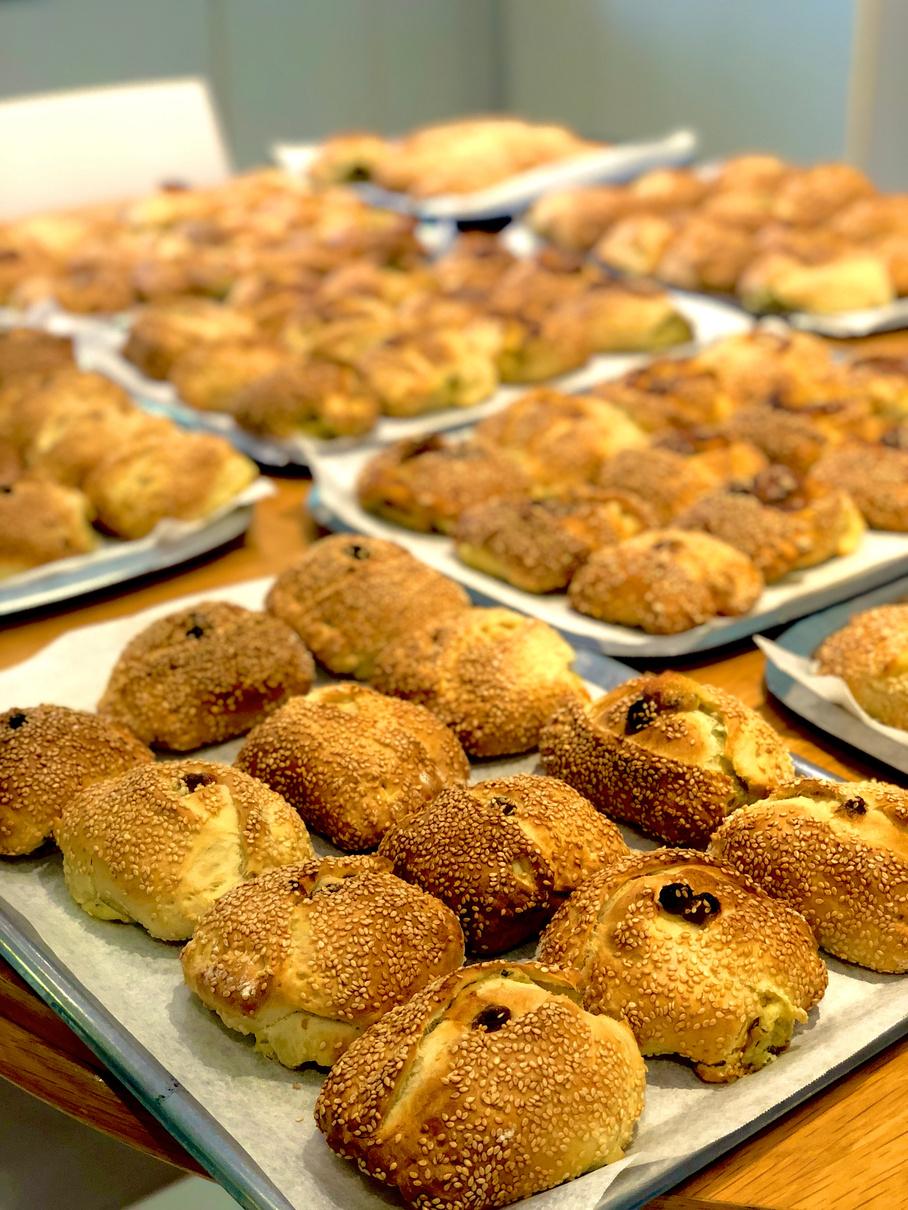 10 Easter pastries “Flaouna”
10 Easter pastries “Flaouna”



O R G A N I C E X T R A V I R G I N O L I V E O I L
ONE OF THE FINEST OLIVE OILS ON THE PLANET FROM SOME OF THE OLDEST OLIVE GROVES IN THE WORLD. WELCOME TO ROYAL SPARTAN OLIVE OIL

Nestled in the stunningly beautiful valley boasting a microclimate that is 700 meters above sea level, surrounded by woodlands and snow-capped mountain ranges you can find Olive trees that date back 3,000-4,000 years old
Around one thousand of these ancient trees are still producing 45,000 kg of fruits every year , all tendered by passionate artisan producers consisting of three brothers an uncle and a father!

This family business bases its product solely on quality and want to produce nothing but the finest ingredients mother nature can offer
Additionally a luxurious range of honey`s are also available such as pure Royal Fir Pearl and blueberry !
Royal spartan vanilla fir honey has a layered but mildly sweet taste, with caramel notes and fir aroma It is very viscous and has an amber, almost off-white colour with golden reflections inside It is rich in trace elements, carbohydrates, proteins, amino acids, enzymes and vitamins It is a product of certified organic / bio farming
 Discover the beauty, the splendour of nature
Left: harvested olives above: Bottled honey
Discover the beauty, the splendour of nature
Left: harvested olives above: Bottled honey


RUNAWAY MEDIA 36 Branding & Creative + Publishing + Content Marketing + Social Media + Websites + Copywriting + Affiliate Management + PR WHY WAIT? www runawaymedia co uk
Mezze or Mezzah....?
The origin of the word mezze is unclear, although it may be derived from the Persian “ maza ” meaning “taste, relish,” or from the Arabic “mazmiz” which means to nibble at food It's also said to have come from the Assyrian word ‘ mez ’ meaning table, and it would take many small tables to serve mezze However we view the origin, it represents the pleasure of savouring little pieces of food A selection of small dishes typically served as appetisers or snacks in Greece and the Middle East. Greek mezze has a long and rich history, dating back thousands of years.
One of the earliest examples of Greek mezze is the ancient Greek tradition of symposia, which were drinking parties held in the homes of the wealthy At these gatherings, guests would be served a variety
of small dishes, including olives, cheeses, and fruits, to accompany their wine. This tradition continued throughout the centuries and evolved into the modern-day practice of serving meze
In Greece, mezze is a social tradition and is often enjoyed in the company of friends and family Mezze can be found in tavernas and restaurants throughout Greece and is an important part of the country's culinary culture.
Some of the most popular Greek mezze dishes include tzatziki, taramasalata, dolmades, spanakopita, and saganaki


Tzatziki is a yogurt-based dip made with cucumber, garlic, and dill It is often served with pita bread or vegetables and is a refreshing and healthy addition to any mezze spread
Taramasalata is a dip made from fish roe, olive oil, lemon juice, and breadcrumbs. It has a creamy texture and a slightly salty flavour and is typically served with bread or crackers

Dolmades, also known as stuffed grape leaves, are a savoury dish made from grape leaves stuffed with a mixture of rice, herbs, and sometimes ground meat They are typically served cold and are a delicious addition to any mezze platter
Spanakopita is a pastry made with spinach and feta cheese. It is typically made in the form of small triangles or rolls and is a popular snack in Greece
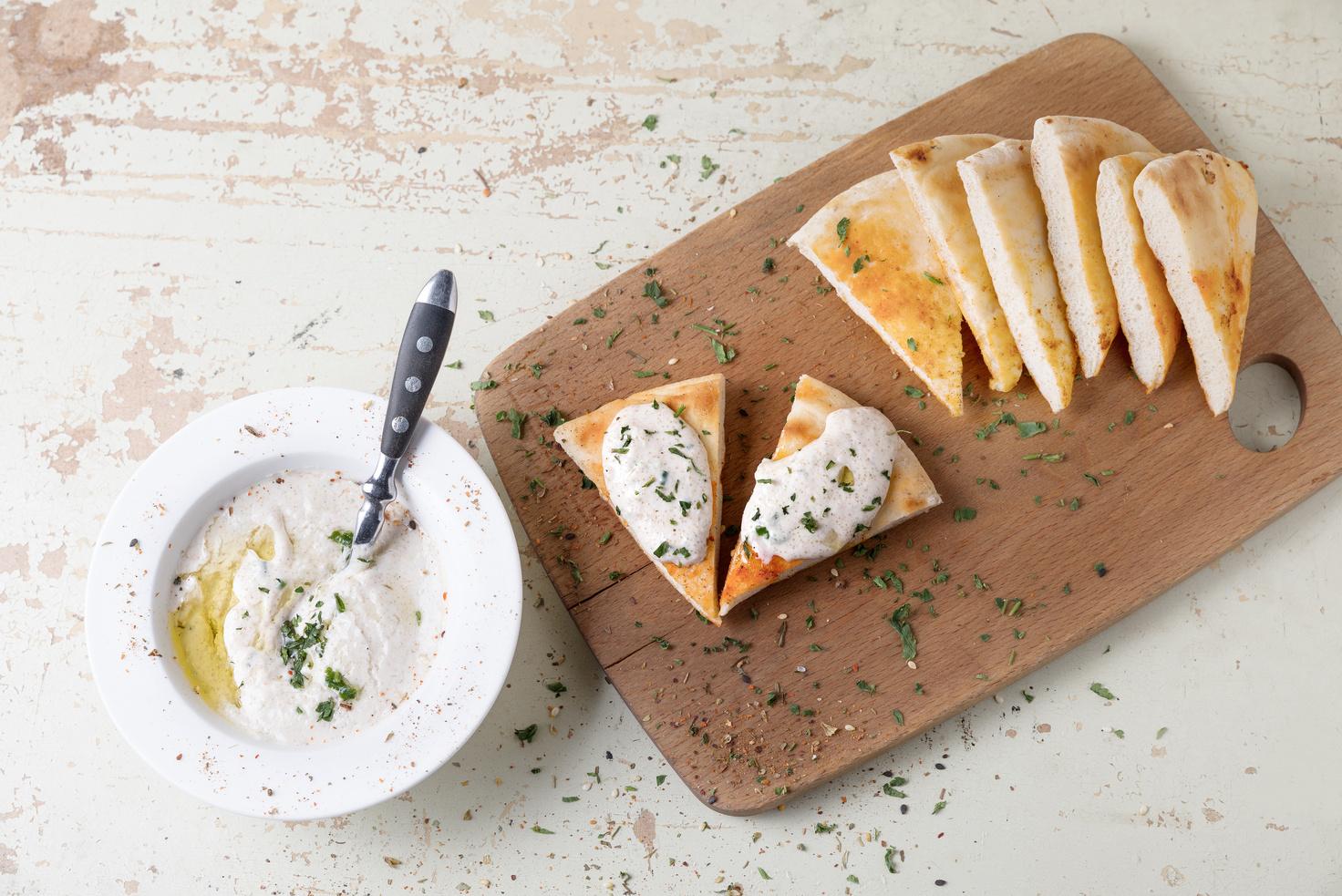
Saganaki is a type of fried cheese that is typically made with kefalograviera or graviera cheese It is often served with lemon wedges and is a popular mezze dish in tavernas throughout Greece
One of the unique features of Greek mezze is the emphasis on sharing and communal dining. In many restaurants and tavernas, mezze is served familystyle, with a selection of small dishes placed in the centre of the table for everyone to share This tradition reflects the importance of hospitality and communal dining in Greek culture
Another important aspect of Greek mezze is the use of fresh, seasonal ingredients Many of the dishes are made with local produce and traditional Greek ingredients, such as olive oil, feta cheese, and herbs like oregano and thyme. This emphasis on fresh, local ingredients is a hallmark of Greek cuisine and is one of the reasons why Greek mezze is so popular around the world
Greek mezze has also been influenced by the country's long history of trade and conquest
Over the centuries, Greece has been ruled by various empires, including the Ottoman Empire, which had a significant influence on the country's cuisine. Ottoman meze dishes, such as stuffed grape leaves and hummus, were incorporated into the Greek culinary tradition, creating a unique blend of flavours and ingredients
In recent years, Greek mezze has gained popularity outside of Greece, with many restaurants and bars around the world offering their own versions of traditional Greek dishes This popularity reflects the growing interest in Mediterranean and Middle Eastern cuisine and the desire for healthy, flavourful dishes that are meant to be shared and enjoyed with friends and family

MEZEDES RECIPES
Baked feta and mint with phyllo pastries
Ingredients
Small bunch of fresh mint
1 tbsp olive oil
200g pack feta, sliced into 4 fingers
2 large phyllo pastry
Method
Preheat the oven to 180C/ fan 160C
Finely chop the mint and mix with the olive oil
Brush over each feta finger and set aside
Brush one filo sheet generously with melted butter and lay the other sheet on top
Cut the layered filo sheets into 4 equal rectangles
Place a finger of feta at the end of a rectangle and wrap the filo around the cheese, brushing with butter as you go to make it stick
Brush the outside of the pastry with butter
Place the fingers on a baking sheet lined with baking paper and bake for 20-25 minutes until golden brown and crisp
Serve with salad leaves and lemon wedges
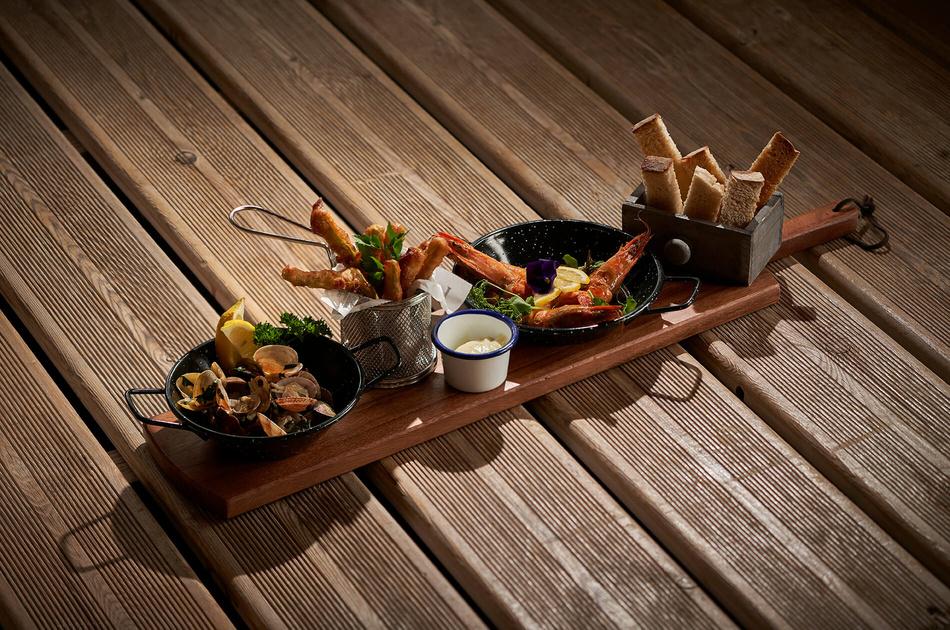
Seafood mezze

Ingredients
6 extra large tiger prawn
1 cup small tiger prawns
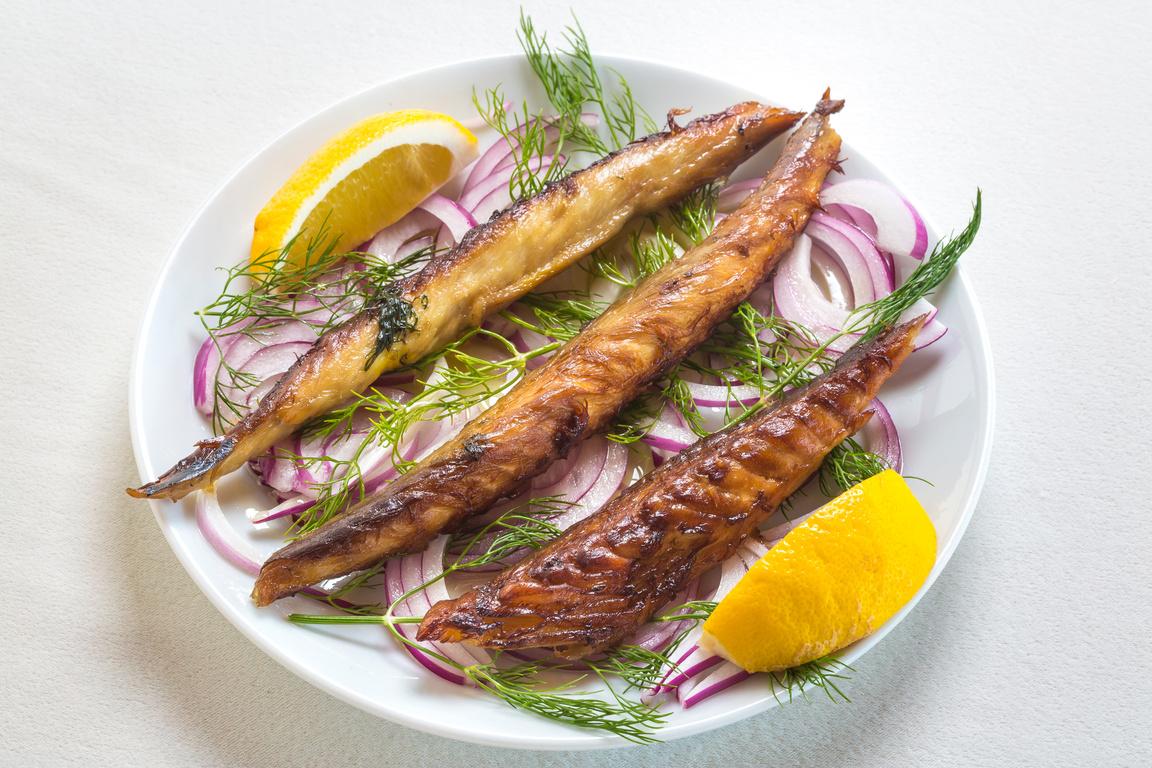
8 scallops
3/4 cup samphire
1/2 baguette
4 tablespoons olive oil
1/2 teaspoon chilli flakes
2 tablespoons finely chopped parsley
2 tablespoons butter
4 tablespoons Mustard
Method
Peel the prawns and add to a pan with 2 tablespoons of the olive oil and place on medium heat, colour on both sides, add 1 Tablespoon of the Mustard with Rosé Wine and Grapefruit , place in a serving dish and sprinkle with the parsley.
For the small prawns
Peel the prawns and add to a pan with 2 tablespoons of the olive oil and place on medium heat, colour on both sides, add 1 Tablespoon of the Maille rose wine mustard, place in a serving dish and sprinkle with the chilli flakes.
For the scallops
In a pan place 1 tablespoon butter and melt on medium heat, when the butter starts to sizzle add the scallops without stirring for 1 minute, turn over and colour the other side for a further minute, add the mustard, white wine and stir well, once incorporated place on a serving dish
For the samphire
Scorch the samphire in boiling water for 1 minute, strain and place on a serving dish.
For the baguette
Slice the baguette thinly, add to a hot pan with the remaining butter, toast each side in the pan.
Serve all plates together
Greek Custard pie

For the custard pastry
200 ml unsalted butter, melted, plus extra for greasing
3 free-range eggs, separated
125g caster sugar
½ tsp vanilla extract
90g semolina
1 litre pint full-fat milk, warmed
8 sheets filo pastry

For the syrup
100 ml water
2 lemon
440g caster sugar
Method
Preheat the oven to 180C/160C Fan Grease a 20cm springform cake tin
In a large bowl, whisk together the egg yolks, caster sugar and vanilla extract until pale and creamy Gradually beat in the semolina and the warmed milk Put this mixture into a clean pan and cook over a low heat for up to 10 minutes until thickened, stirring constantly
In a clean bowl, whisk the egg whites until stiff but not dry peaks form when the whisk is removed Loosen the semolina custard with a spoonful of the egg whites, then fold in the rest
Brush each sheet of filo pastry with the melted butter and lay in the springform tin, alternating the direction the excess will drape over the sides until you ’ ve used 6 sheets
Pour the custard mixture into the pastry-lined tin and fold the overhanging sheets over the top, tucking in the ends Place the final sheet of filo, buttered and folded in half, on top Tuck in the sides and butter the top
Bake for 45–50 minutes until the custard mixture has set Check after 30 minutes and cover with foil if the top is getting too brown
8 Zest the lemons, then peel them and cut the fruit across into thin slices, removing excess pith
Heat the caster sugar and 200 ml of water in a pan When the sugar has dissolved, add the lemon juice and simmer for 8–10 minutes until you have a thick syrup Add the lemon slices to the syrup, then set aside
Allow the pie to cool to room temperature before releasing from the tin. Cut into slices using a knife and serve with the syrup.
Peloponnese Greece

F O O D S T O R E S
The Peloponnese peninsula in southern Greece is renowned for its rich history, breathtaking landscapes, and vibrant culture But one aspect of this region that often goes unnoticed is its unique culinary culture and cuisine From the freshest seafood to the most succulent meats, the Peloponnese offers a diverse range of flavours and ingredients that are sure to tantalise your taste buds
The Peloponnese is a land of contrasts, with mountains and valleys, rocky coastlines and sandy beaches, and fertile plains The diverse landscape has shaped the regions culinary traditions, with each area offering its own distinct flavours and specialties The region is also blessed with a mild Mediterranean climate that allows for a year-round supply of fresh produce and seafood
One of the most distinctive features of the Peloponnese cuisine is its emphasis on locally-sourced, seasonal ingredients From the wild herbs and greens that grow on the hillsides to the fresh catch of the day, Peloponnese cuisine is all about showcasing the natural bounty of the region Locally-produced olive oil, honey, and wine are also staples of the Peloponnese kitchen
Seafood is a particular specialty, with the Aegean and Ionian seas providing a bounty of fresh fish and shellfish The famous octopus of the region is typically grilled or stewed with tomatoes, onions, and herbs, while red mullet is often fried or grilled and served with lemon and olive oil Other seafood specialties include sardines marinated in vinegar and stuffed squid with rice and herbs
Meat also features prominently in Peloponnese cuisine, with lamb, pork, and goat being popular choices Slow-cooked lamb is a particular specialty, often flavoured with garlic, rosemary, and lemon Pork is typically roasted and served with a variety of sides, while goat is often stewed with vegetables and herbs The region is also known for its charcuterie, with cured meats such as soutzouki and pastourma being popular choices
One of the most iconic dishes of the Peloponnese is the famous kokoretsi, a dish made from lamb or goat offal wrapped in intestines and roasted over an open fire This dish is a true test of culinary skill, with the intestines needing to be cleaned thoroughly and wrapped tightly to ensure a succulent and flavorful result Kokoretsi is typically served during festive occasions such as Easter and is a beloved tradition throughout the region
Vegetables and legumes also feature prominently in Peloponnese cuisine, with fresh greens such as horta (wild greens), vlita (amaranth), and stamnagathi (chicory) being staples of the local diet Beans and lentils are also popular, often served in hearty soups or stews with vegetables and herbs
Cheese is another important component of Peloponnese cuisine, with feta being a ubiquitous choice Other regional cheeses include the tangy kefalotyri the creamy manouri and the pungent kasseri Cheese is often served as a meze (appetizer) alongside olives, bread, and other snacks

T H E H E A R T & S O U L O F G R E E C E page 47

No discussion of Peloponnese cuisine would be complete without mentioning the region ’ s famous desserts

Renowned for its honey, which is used in a variety of sweet treats such as baklava, kataifi, and melomakarona Other popular desserts include loukoumades (fried doughnuts), halva (a sweet made from tahini and sugar), and revani (a semolina cake soaked in syrup)
Roasted Pork - Piglet :
Ingredients
4 kg pork with skin
2 kg of Naxos potatoes
Coarse salt
Oregano
3/4 glass of oil
3 large lemons
Pepper
Method
Peel the potatoes and cut them into quinces Add coarse salt, a little pepper, oregano, the juice of 3 large juicy lemons and the oil Wash the meat Place it in the baking pan with the skin facing down and add salt, oregano and pepper Turn it over and wipe the skin with paper towels Then rub the skin with coarse salt to make it crispy with thick blisters Place the potatoes in the baking pan around the meat, emptying the lemon oil into the baking pan, taking care not to wet the skin
Place the baking pan in the penultimate position of the oven, bake for half an hour in a preheated oven at 250 C and continue baking at 200 C about another 3 1/2 hours
Note: If the skin has hairs , we shave them with a razor or burn them with the furnace You need to tell the butcher to chop your meat , keeping it one piece without scratching the skin As many kilos as the meat is so many hours it takes to cook
Greek tomato scrambled eggs - Kayanas

Ingredients
6 ripe grated tomatoes
100 g syglino or apaki
6 eggs lightly beaten
3-4 olive oil salt – pepper
Method
Heat the oil in a large non-stick pan Add the tomatoes and let them simmer in the oil until they thickens around 25 over low heat
Add the syglino and simmer for 5 more Pour the eggs by turning the pan to go everywhere Let them thicken for 3 – 4 ́. With a wooden spoon, stir the mixture until the eggs thicken completely, but be careful not to be too dry Season with salt and pepper and serve
Smoked Syglino
Ingredients
15 kg smoked pork cut into pieces
4 teacups water
1 cup wine
1 bay leaf
2 spices
2 oranges the peels
Method
Bring the water, wine, bay leaf and spices to a boil Add the meat and cover with the orange peels Boil over medium heat for about an hour
If you wish, you can also add sausages store syglino in a jar with oil; Drain the boiled meat well and place it in a container It is covered with olive oil If you wish to smoke the meat yourself: Large pieces of meat, cut about 10cm into stripsSalt and wrap with a towel and turn it over for 6 hours about 1-2 days
Place it in a basin of red wine on the last day Before doing the procedure for smoking, you can put garlic and a little pepper - Smoking can be achieved, either by hanging in the fireplace, or on a grill of an improvised smokehouse, or in cells especially for smoking The piece of meat should be 80 cm
Seabass,khitchririsotto,
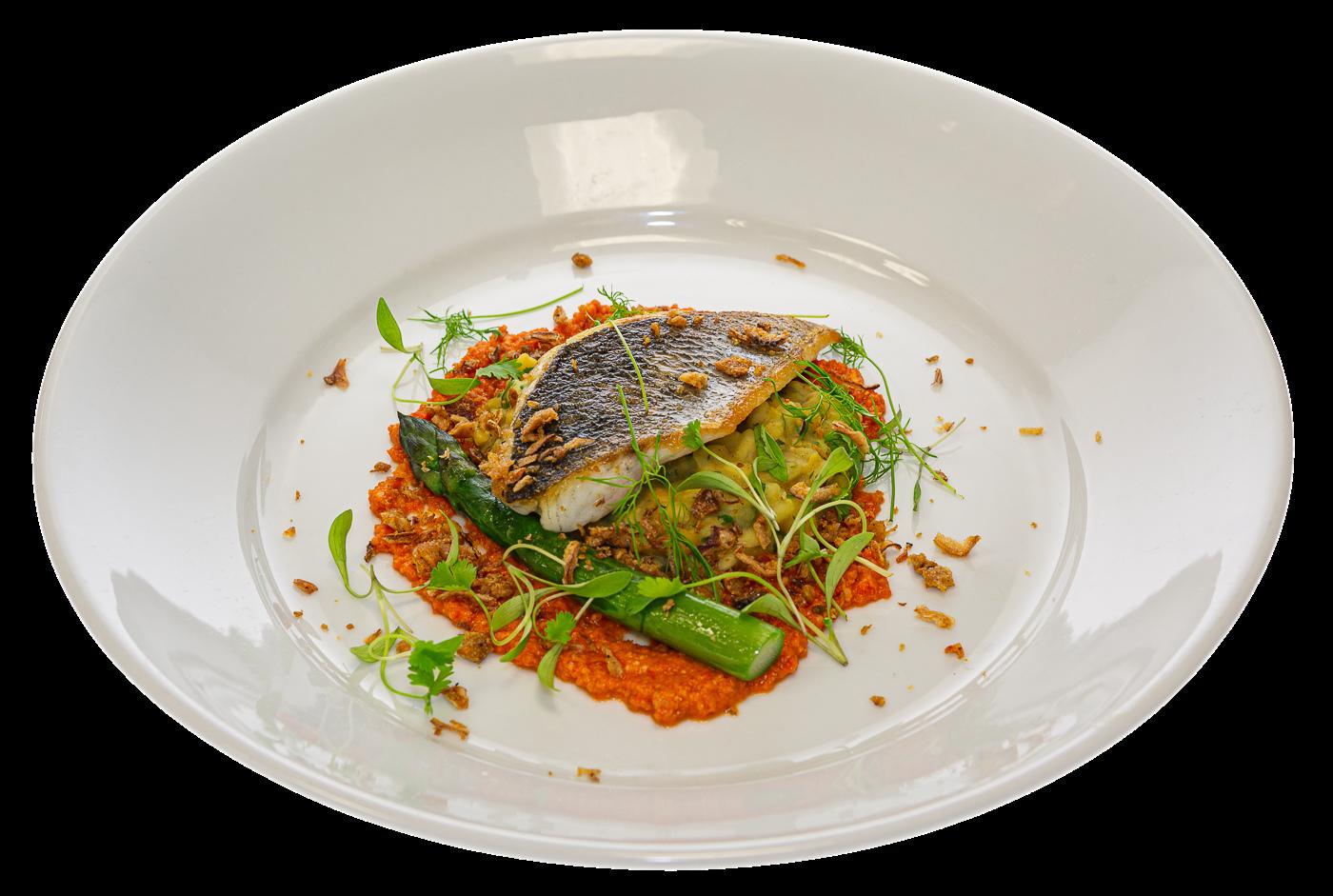
cevrettesecromesco, spicedcrispyshallots
Ingredients
4 x 200g seabass fillets
2 tablespoon of olive oil
Crispy shallots (mix together)
4 tablespoons of crispy shallots
Pinch of mango powder
Pinch of chilli powder
Pinch of black salt
Pinch of ground cumin
Risotto
200g arborio rice
700ml of vegetable stock
2 cloves
1 cardamon
½ teaspoon of ground cumin
Pinch of saffron
1 shallot finely diced
½ teaspoon of crushed garlic
60g of cooked chana dhal
50g unsalted butter
Juice of ½ lemon
Romesco
80g of cevrette sec soaked in warm water for 2hours (dry roasted for 20min)
3 roasted red peppers
1 shallot diced
2 dried Kashmiri chillies
2 cloves of garlic
2 tomatoes skinned
50g roasted hazelnuts
50g roasted almonds
2 tbsp of white wine vinegar
Juice of ½ a lemon
1 teaspoon of paprika
½ teaspoon of ground cumin
Method
By Chef Visen Anenden
Whilst the risotto is cooking, heat a non -stick frying pan on a medium heat, add the oil Place the seabass fillet skin side down and cook for 12 minutes take off the heat and turn the fish over leave for 3 min
Heat 2 tbsp of olive oil add the shallots and cook gently until soft, but not coloured, add the 2 cloves, 1 cardamon, rice Stir around in the pan until slightly toasted Then add the garlic
Start to add the stock and saffron, ladleful at a time, the stock needs to have evaporated before the next ladle is added Then add the cook dhal Add more stock the consistency of the rice should be creamy This should take up to 16min
Once all the stock has been used remove off the heat add the butter and juice of lemon to taste, season also The risotto should be loose and creamy if its slightly stiff add a little warm water to loosen
Assemble and serve
By Executive Chef Giannis Bratsolias
SUNDAY DINNER WITH A GREEK FAMILY
If the Greek family had a "Trademark", it would be a family around a well-set table that does not fit the food made by mom. The most emblematic habit of Greek families, the Sunday table, is one of the most beautiful memories that each of us carries.

It is there that the family will gather, where everything will be said, where family relationships will be rekindled and people will come closer, gaining a beautiful, timeless feeling. At the Greek Sunday table.
The Sunday table is a habit of the "old" that became a tradition, an informal custom with a value that is preserved to this day. Given that free time has now dwindled, getting the family together becomes even more important
At the Sunday table, family and food traditions come together to remind us of our roots.
It is like a small celebration, to celebrate the people we have next to us with recipes and flavours that require art and mastery!
It is not only mom's cooking skills that she does her best (so as not to leave anyone complaining), that make the food so delicious, but also the communication and cooperation between family members.
From setting the table, serving to picking, everything is done by everyone, for everyone.
The Sunday table is the most beautiful family habit bequeathed to us by the Greek tradition
As loaded with concepts and obligations as everyone's schedule is on other days, Sundays can be loaded with beautiful family moments
The Sunday table keeps the customs and traditions of each region warm, it is the day when Greek cuisine wears its festive clothes and all of Greece gathers around a gastronomic table
GREEK SALAD

Ingredients
200g of feta, (one block)
3 g dried oregano
2 g of freshly ground black pepper
1 pinch of chilli flakes, (optional)
60g of extra virgin olive oil
1/2 red onion
250g of tomatoes
100g of cucumber, (optional ) baby cucumbers
50g of pitted Kalamata olives
Marinated feta

Begin marinating the feta. Leaving overnight will result in the best flavour. Take a container that will fit the feta in it snuggly, and add the herbs, pepper and lemon zest. Drizzle in the oil, stir then add the feta and rotate to cover and distribute the herbs. Leave to marinate in the fridge
200g of feta, (one block)
3gr dried oregano
1g of freshly ground black pepper
60g of extra virgin olive oil
Finely slice the red onion and place it in a bowl of cold water to crisp up
To assemble the salad, slice up the tomatoes into wedges and slice the cucumber into 2cm pieces Toss with the olives and drained onions
250g of tomatoes
100g of cucumber, (optional) baby cucumbers
50g of pitted Kalamata olives
Use some of the infused oil from the feta to dress the salad and transfer to a serving platter Serve with the feta on top and drizzle with a little more of the oil
page 52
GREEK HONEY CAKE

Honey cake
120g of unsalted butter
330 g of honey, plus 20g extra for drizzling
3 eggs
250g of plain flour
1/2tsp bicarbonate soda
1/2tsp baking powder
120g of Greek yoghurt
Whipped yoghurt
120ml of double cream
50g of Greek yoghurt
2 tbsp of icing sugar
To serve
400g of strawberries, hulled and halved
Method
Line a 25cm cake tin with baking paper and preheat an oven to 180°C/160°C fan
Add the honey and butter to the bowl of a stand mixer and beat together. Continue mixing and add in the eggs one at a time.
Once they are all incorporated, gently fold in the flour, bicarbonate of soda and baking powder, trying not to knock any of the air out.
Finally, fold in the yoghurt, then carefully pour the mixture into the lined cake mould. Bake the cake for 30-40 minutes. You can tell it’s cooked through by placing a toothpick in the centre of the cake – it should come out clean
While the cake bakes, make the whipped yoghurt Whip the double cream and icing sugar together until nice and thick – around the soft peak stage Fold in the yoghurt and set aside
When the cake is cooked through, remove it from the oven and leave it to rest for 1 hour in the mould Once completely cooled, lift it out and cut into 8 even portions
Divide between 8 plates, drizzle with a little extra honey then serve with a dollop of whipped yoghurt and plenty of strawberries
Greekseabass
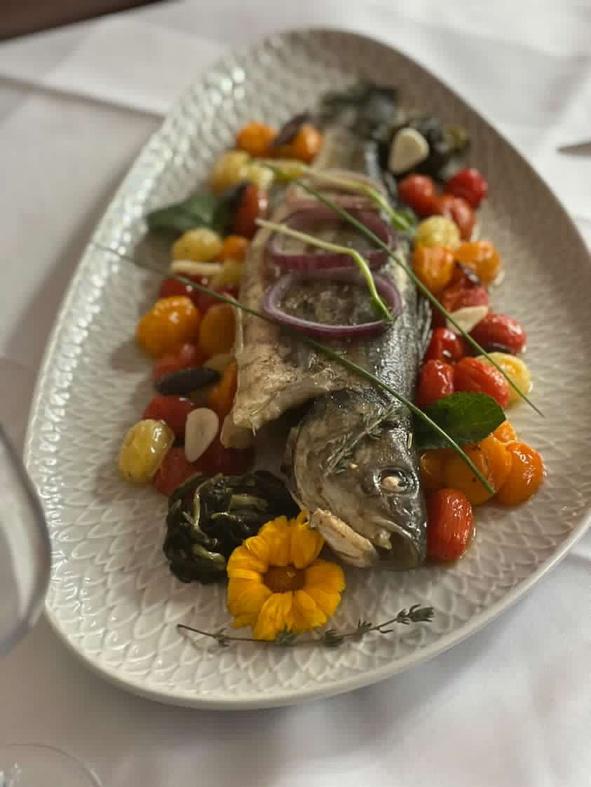 by Chef Sakis Kokinidis
by Chef Sakis Kokinidis
notes
If you do not want to use Sea bass you can use any other fish
2 servings 30 minutes
ingredients
Fresh Sea Bass
1 sliced onion
Cherry tomatoes
thyme salt and pepper
5 peeled black olives
3 soup spoons of olive oil
1 clove of garlic
directions
1/ Sear the fish on both sides to brown,
2/In a bowl put the tomatoes in a row with the olives and olive oil and leave it for 5 minutes
3/When the fish is ready, put it in a pan
4/Add the tomatoes in the bowl. Add salt, pepper, thyme and a little water and bake at 180 for about 16 minutes
2 3 4. page 54
1.
GreekStyleStuffedTomatoes:
by Chef Sakis Kokinidis

ingredients directions
1 onion,
1 green pepper,
1 carrot,
4 grated tomatoes,
3 tablespoons of olive oil, salt, pepper,
a pinch of oregano,
1 glass of water
2 tsp castor sugar
half a cup of rice
2 servings 30 minutes
Fry all the chopped vegetables in olive oil, add the grated tomato, the water, the spices and as soon as it boils for 5 minutes, add the rice
Once it has boiled for another 5 minutes, remove it from the fire Let it to rest and soak
Fill the tomatoes after they have been sprinkled with salt and sugar, put them in the pan with olive oil and a little water and bake at 180 degrees for 45 minutes
JOIN US

Advertising revenue manager: to join the CSF int advisory board
Responsibilities : To obtain advertisers and/or sponsors for the CSF int website and magazine .
This is a vital role to secure the success of our fundraising activities.
The positives , are to be at the forefront of making a serious financial difference
The negatives is that this is not a paid role and is based on voluntary support.
Experience within this field of work with good contacts is as vital as is the goodwill

If this is of interest please do not hesitate to drop me a line:
Info@alancoxon.com
Fundraising Co-coordinator : To join the CSF int Advisory board.

This role is to assist develop and creative fundraising activities with CSF int members around the world.
An opportunity to stimulate and implement events and creative ways of fundraising
Working with chefs to help stimulate, plan, motivate and market fundraising activities, from dinner events , auctions, walks to skydives and everything in-between
This is a vital role that will help increase funds and support to those that need it most.
To retain cultural gastronomy, culinary heritage and traditional skills for generations to come
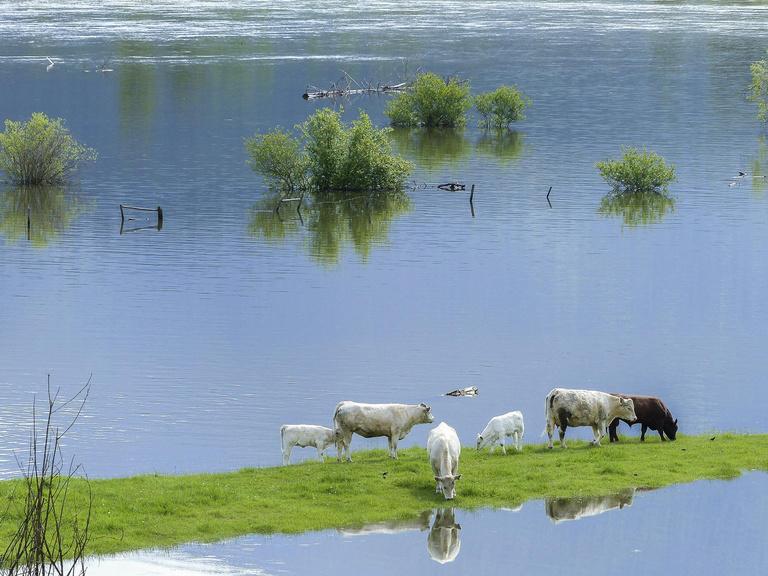

Positives: A role that is stimulating for anyone who enjoys working on creative events with the food and hospitality sector, chefs, foodies and stimulating activities
Negatives :This is not a paid role and is based on voluntary support .
The role requires an element of cultural understanding and the individual must be well organised ,enthusiastic a good communicator who is keen to take on responsibilities.
If this is of interest and you would like further info , please do not hesitate to drop me a line Info@alancoxon.com
Get involved &
Coming up...
CSF Summer Edition -
Our country of focus will be Portugal as well as summer BBQ's, salads and outdoor cooking If you have some tried and tested favourite summer recipes you want to share or working with outdoor kitchen manufacturers or BBQ producers, outdoor equipment please do let me know! Also launching in our summer edition more on two CSF International Awards!



CSF int Cook Book -

We are developing a stunning hard back cookbook! Would you like to be involved?
Drop us a line
Get in Touch!
Email: info@csfint.com
info@alancoxon com
Call for Ambassadors & Members!
How can you help?
Start by planning a charity CSF int dinner

Obtain new chefs, foodies, front of house, bakers, chocolatiers, or sommeliers to become members, happy to send you application forms
Develop a charity walk, run, sports match, wine tasting, the list is endless and it can be
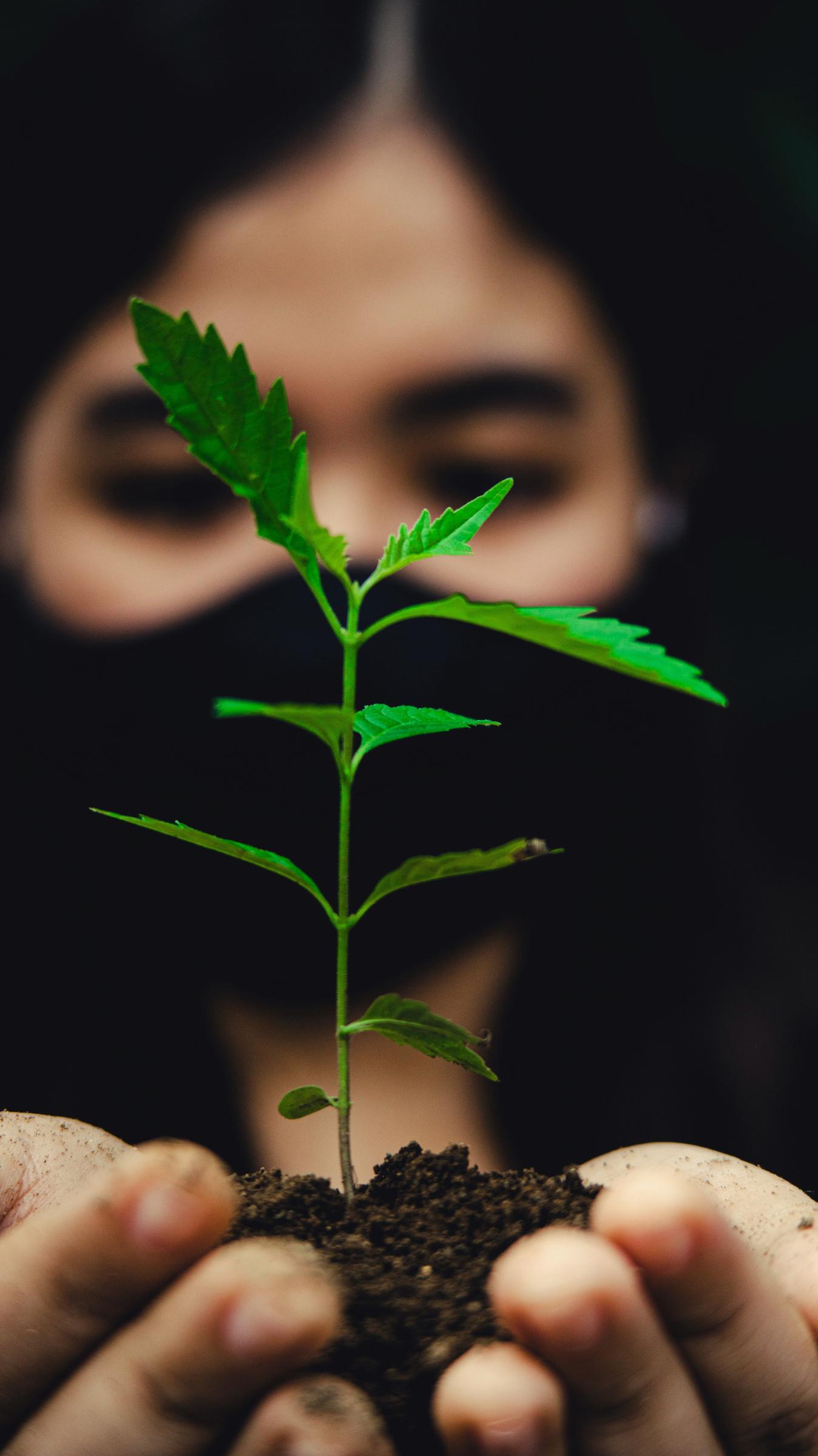

Join the CSF International today and help those in desperate need H E L P W H E R E H E L P I S N E E D E D www.csfint.com

















 Alan Coxon President of CSF int
Alan Coxon President of CSF int























 by Chef Jean Nassar
by Chef Jean Nassar

 Words by CHEF JULIANA ROMERO
Words by CHEF JULIANA ROMERO


 Left Graph: A new concept of supply chain. Circular economy
Left Graph: A new concept of supply chain. Circular economy









 Words by Jacqui Brown
Words by Jacqui Brown













 Top Photo: Chef Evi Chioti, CSF Ambassador for Cyprus
Middle Photo: Flaouna
Bottom Photo: Dr Annita Antoniadou, Archaeologist page 35
Top Photo: Chef Evi Chioti, CSF Ambassador for Cyprus
Middle Photo: Flaouna
Bottom Photo: Dr Annita Antoniadou, Archaeologist page 35

 10 Easter pastries “Flaouna”
10 Easter pastries “Flaouna”



 Discover the beauty, the splendour of nature
Left: harvested olives above: Bottled honey
Discover the beauty, the splendour of nature
Left: harvested olives above: Bottled honey






















 by Chef Sakis Kokinidis
by Chef Sakis Kokinidis



























